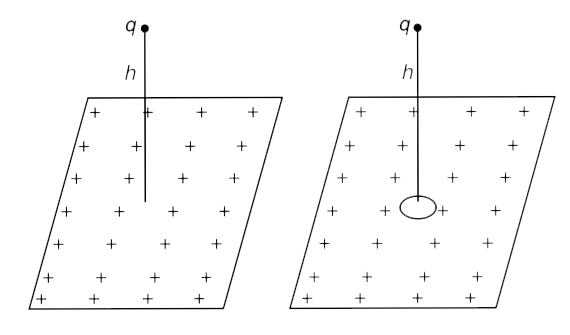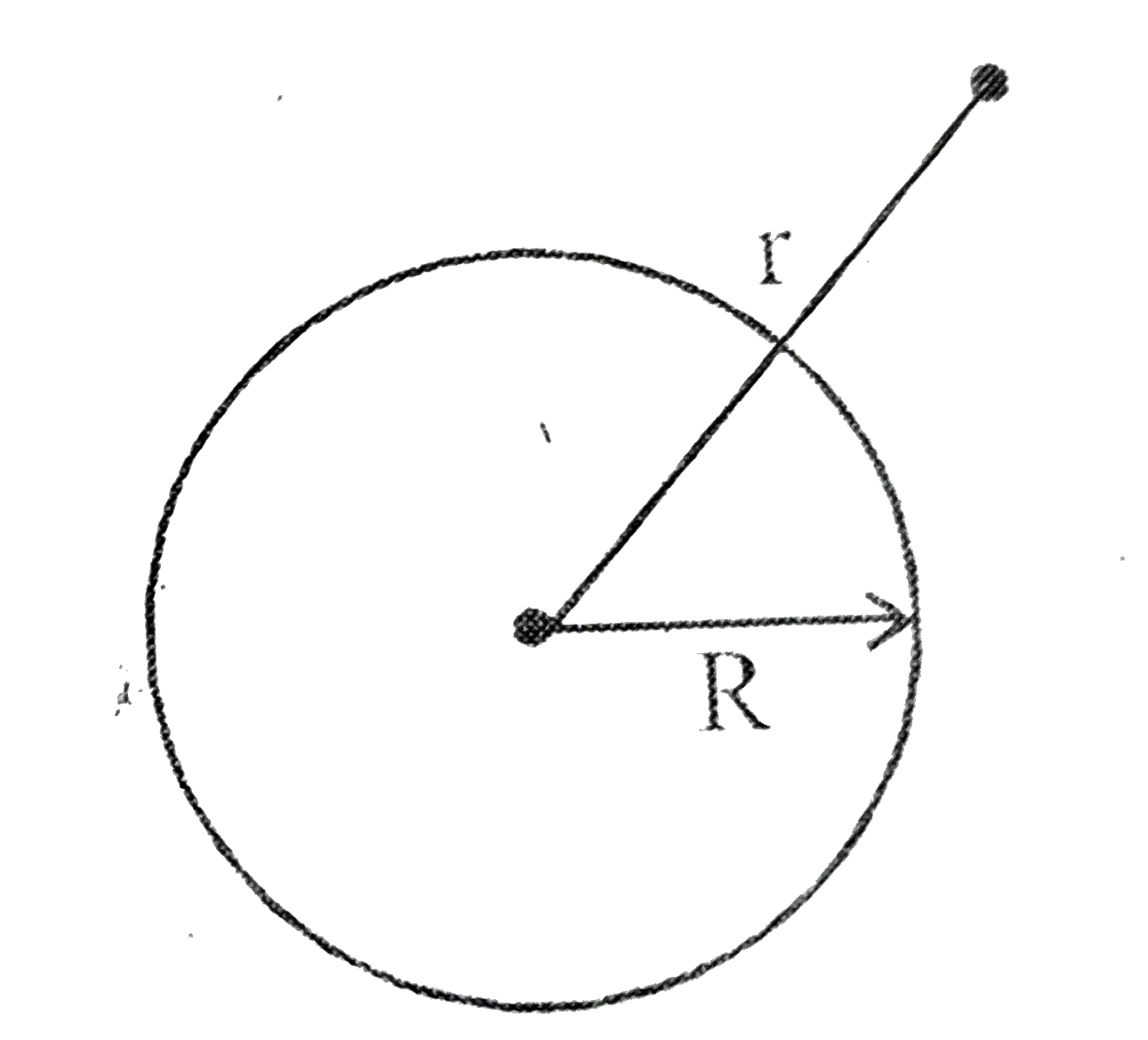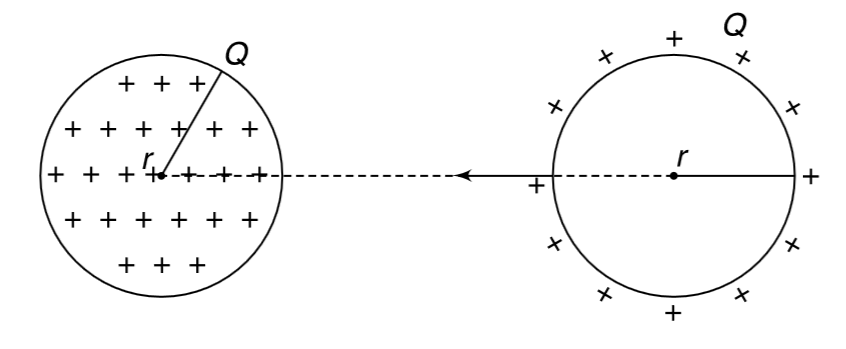A small charged ball is hovering in the state of equilibrium at a height h over a very large horizontal uniformly charged sheet. If a disc of radius r (r<<h), is removed from the plate directly underneath the ball, then the acceleration of the ball will be
g2(rh)2
g2(hr)2
g4(rh)2
g4(hr)2
The correct Answer is:A
Step by step video, text & image solution for A small charged ball is hovering in the state of equilibrium at a height h over a very large horizontal uniformly charged sheet. If a disc of radius r (r lt lt h ) , is removed from the plate directly underneath the ball, then the acceleration of the ball will be by Physics experts to help you in doubts & scoring excellent marks in Class 12 exams.
Updated on:21/07/2023Topper's Solved these Questions
Similar Questions
A small charged ball is in state of equilibrium at a height h above a large horizontal uniformly charged dielectric plate having surface charge density of σC/m2. (a) Find the acceleration of the ball if a disc of radius r (ltlt h) is removed from the plate directly underneath the ball. (b) Find the terminal speed (V0) acquired by the falling ball. Assume that mass of the ball is m, its radius is x and coefficient of viscosity of air is η. Neglect buoyancy and assume that the ball acquires terminal speed within a short distance of its fall.

View SolutionIf the potential at the center of a uniformly charged sphere of radius R is V then electric field at a distance r from the center of sphere will be (r<R) : -

View Solution
Knowledge Check
A charged particle having some mass is resting in equilibrium at a height H above the centre of a uniformly charged non-conducting horizontal ring of radius R. The equilibrium of the particle will be stable .
Afor all values of HBonly if H>R√2Conly if H<R√2Donly if H=R√2A small iron ball falls from rest through a large height h into a water column, the final velocity
ADoes not depend on hBIs proportional to √hCIs uniformDAll these statements are not correctA ball is thrown vertically upwards with a velocity equal to half the escape velocity from the surface of the earth. The ball rises to a height h above the surface of the earth. If the radius of the earth is R, then the ratio hR is
A12B13C2D3
For a uniformly charged ring of radius R, the electric field on its exis has the largest magnitude at a distance h from its centre. Then value of h is :
View SolutionFor a uniformly charged ring of radius R, the electric field on its exis has the largest magnitude at a distance h from its centre. Then value of h is :
View SolutionA small positively charged ball of mass m is suspended by an insulating thread of length L. This ball remains in equilibrium with string horizontal when another small charged ball is placed exactly at a distance L below the point of suspension of the first ball. The second ball is slowly moved away from the first ball to a far away point. (The second ball is moved horizontally so that the first ball does not accelerate). As a result the first ball lowers down to the original position of the second ball and the string become vertical. Find the work done by the external agent in removing the second ball.

View SolutionThere is a ball of radius r having uniformly distributed volume charge Q on it and there is a spherical shell of radius r having uniformly distributed surface charge Q on it. The two spheres are far apart. (a) A point charge q is moved slowly from the centre of the shell (through a small hole in it.) to the centre of the ball. Find work done by the external agent in the process. (b) The two spheres are brought closer so that their centers are separated by 4r. Now calculate the amount of work needed in slowly moving a point charge q from the centre of the shell to the centre of the ball. Assume that charge on one ball does not alter the charge distribution of the other. Does your answers in (a) and (b) differ? Why?

View SolutionA small ball of mass m=21g suspended by a insulating thread at a height h=12cm from a large horizontal conducting plane performs small oscillations (figure) . After a charge q had been imparted to the ball, the oscillation period changed η=2.0 times. Find q.

View Solution
